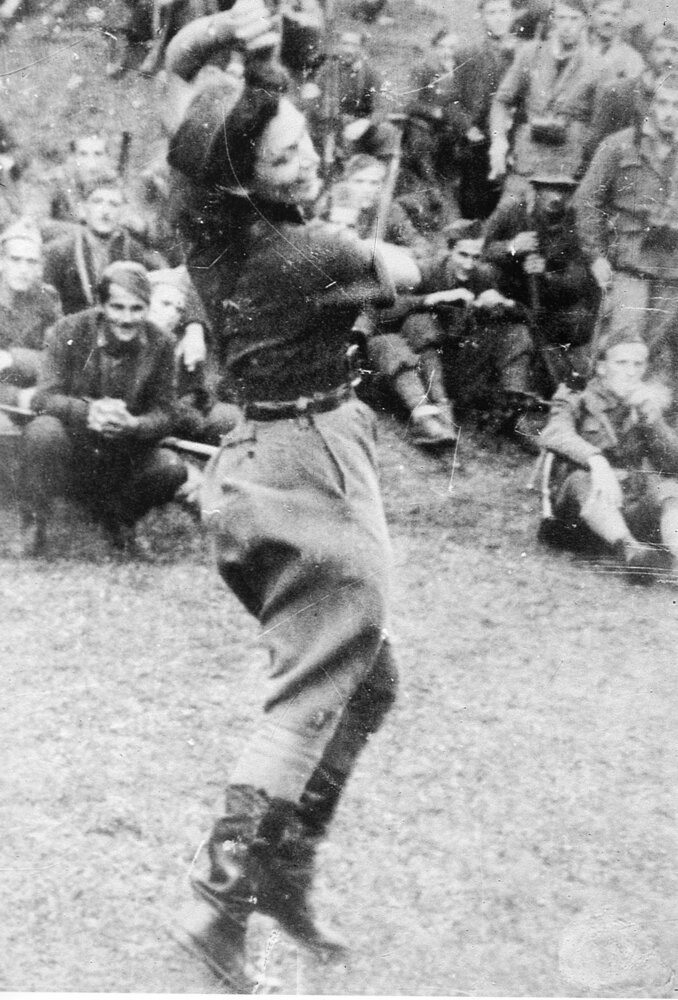Marta Paulin-Brina
1911–2002
In the Madman (Norec), a short dance included in Paulin’s first evening of dances in December 1940 that the dancer/choreographer presented in the Slovene National Theatre Opera and Ballet Ljubljana, an image of a deranged man was created on the basis of Mussolini’s fascist regime. Paulin’s artistic approach is one of the first transformations of political reality into the choreographic medium in Slovenia and an early example of realistic (although coded) approaches in dance. In the spring of 1943, Paulin joined the Partisan army forces and became a member of the cultural group of the XIV Division of the Yugoslav Partisan army. As a dancer, she performed at many meetings, especially in 1943, before her legs got frozen during the winter of early 1944. Of all the meetings, only three photos, by photographer Jože Petek, were preserved. Two of them were taken on the 23rd of September 1943 at Mašun (Southern Slovenia on the border with Croatia) where Paulin danced in front of the newly recruited fighters of the Rab Brigade, formed of the liberated prisoners of the fascist concentration camp on the Croatian island Rab, immediately after the capitulation of fascist Italy. In her memoirs, Paulin writes about the particularity of her dancing task which, in exceptional historical circumstances, demanded a different physicality, a different consciousness, and different dance rhetorics from the ones she knew from her dancing before WWII. Her effort to transform political reality into artistic form, her consideration of dance as an expression of the human struggle in the troubling historical circumstances, and her recognition of the human responsibility towards history—as a history of the class struggle—is something that makes Paulin’s work feminist.
From Nika Arhar, Jasmina Založnik (ed.), Bodies ofm Dance, Aspects of Dance as Cultural, Political, and Art Work in Yugoslavia and After (Belgrade, 2024)



